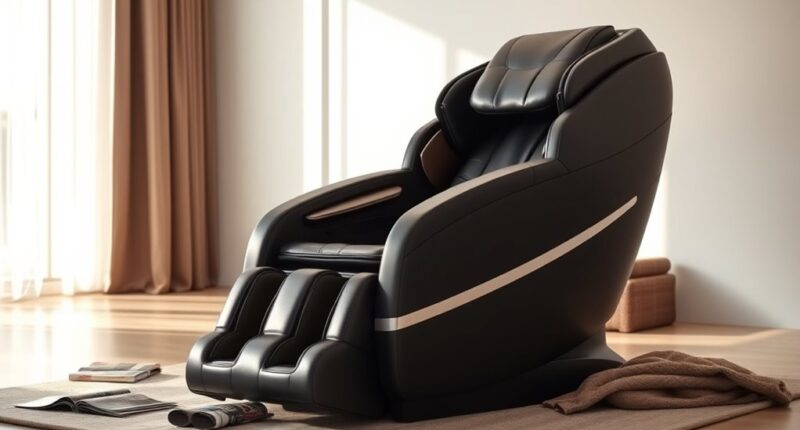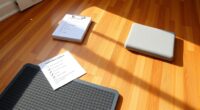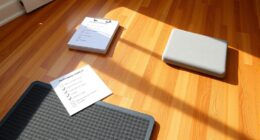Many people mistakenly think you should avoid massage chairs immediately after eating, when sick, or during intense exercise. You might also overlook restrictions during pregnancy, while under the influence, or with certain medical conditions. Using a massage chair at the wrong time can cause discomfort or health issues. Knowing the right timing is key to safe relaxation. If you keep these points in mind, you’ll make the most of your massage experience—and discover more helpful tips.
Key Takeaways
- Avoid using massage chairs immediately after heavy meals to prevent discomfort; light massage can aid digestion.
- Do not use massage chairs when feeling sick or with a fever, as it can worsen symptoms or cause dehydration.
- Refrain from using massage chairs during or right after intense physical activity to prevent muscle inflammation and soreness.
- Do not schedule massages late at night or before sleep, as it may interfere with sleep quality and relaxation.
- Always consult a healthcare professional before using a massage chair if you have medical conditions, injuries, or are pregnant.
Immediately After a Heavy Meal
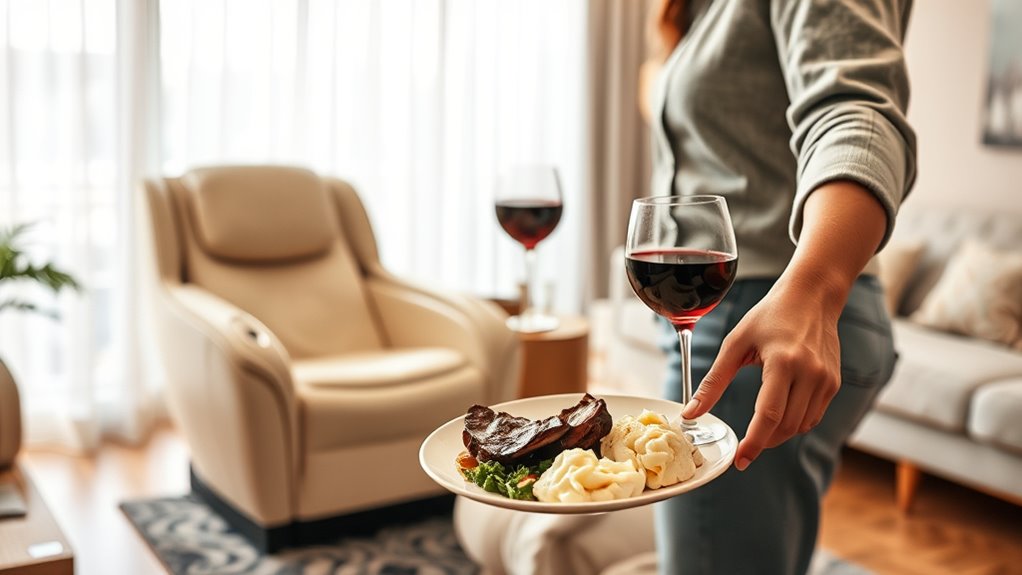
Many people believe you should wait a while after eating before using a massage chair, but there’s actually little evidence to support this. If you’ve just had a heavy meal, you might think a massage could cause digestive discomfort or worsen food allergies. However, gentle massage generally doesn’t interfere with digestion or trigger allergic reactions. In fact, some find that a light massage can help relax abdominal muscles and reduce bloating. The main concern is avoiding intense pressure immediately after eating, which could cause discomfort for some sensitive individuals. As long as your massage isn’t too vigorous, it’s safe to relax and enjoy your session. Just listen to your body, and if you notice any discomfort, pause and reassess. Understanding safe practices can help ensure your massage experience remains comfortable and beneficial.
When You’re Feeling Sick or Have a Fever
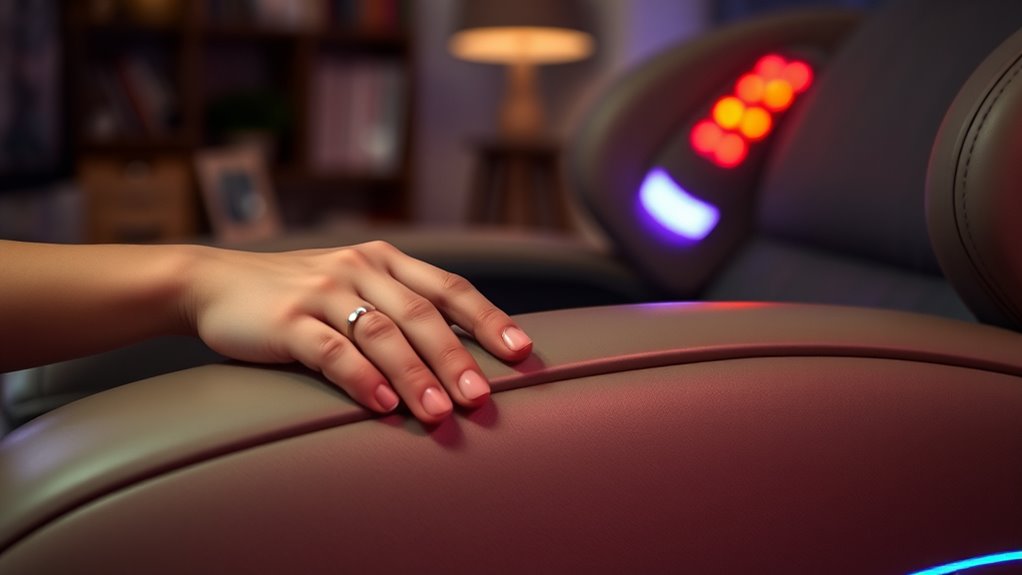
When you’re feeling sick or have a fever, it’s best to skip the massage chair. Using it could worsen your symptoms or extend your illness. Always wait until you’re fully recovered before considering a massage. Engaging in mindful relaxation practices, such as deep breathing or gentle visualization, can support your recovery process and help you feel better faster. Mindfulness techniques
Avoid Massage During Fever
Fever signals your body is fighting off an infection, and adding a massage chair into the mix can do more harm than good. When you’re sick or have a fever, your body is already working hard to recover. Engaging in massage therapy benefits are best experienced when you’re well, not during illness. Using a massage chair during a fever can increase circulation, potentially worsening symptoms or causing dehydration. Additionally, understanding the history of pinball machines can remind us how technology and health considerations have evolved over time, emphasizing the importance of listening to your body’s signals. To protect your health, avoid massage during these times:
- When your temperature exceeds 100.4°F (38°C).
- If you experience chills, weakness, or dizziness.
- During active infections like the flu or cold.
- When you’re feeling generally unwell or exhausted.
Prioritize rest for effective post massage relaxation once you’re better.
Risk of Worsening Illness
Trying to soothe your aching body with a massage chair while you’re sick can backfire, as it may worsen your condition. When you’re feeling unwell or have a fever, massage can increase circulation and cause detoxification risks, potentially overwhelming your body. This could lead to dizziness, dehydration, or a slower recovery process. Additionally, if you’re taking medication, massage might interfere with how your body absorbs or processes these drugs, leading to adverse medication interactions. Pushing through illness with massage might mask symptoms or strain your immune system further. It’s best to wait until you’re fully recovered to enjoy the benefits of massage chairs safely. Ignoring these signs can prolong your illness or complicate your health. Understanding how AI analysis can help identify early signs of illness and prevent worsening health conditions.
During or Right After Intense Physical Activity

Using a massage chair during or immediately after intense physical activity can do more harm than good. Your muscles are already inflamed and sensitive, so massaging them right away can worsen soreness or cause injury. Instead, focus on gentle post-work relaxation and allow your body to recover naturally.
Engaging in proper recovery strategies such as stretching and hydration can further support muscle healing. Here are four key reasons to avoid massage chairs during this time: 1. Increased inflammation and swelling 2. Disrupted muscle recovery process 3. Potential for overstimulation and soreness 4. Reduced effectiveness for chronic pain management later on
Waiting until your muscles calm down ensures a safer, more effective experience. Avoid rushing into massage therapy immediately after intense exercise, and give your body time to rest and recover properly.
When You Have Certain Medical Conditions or Injuries
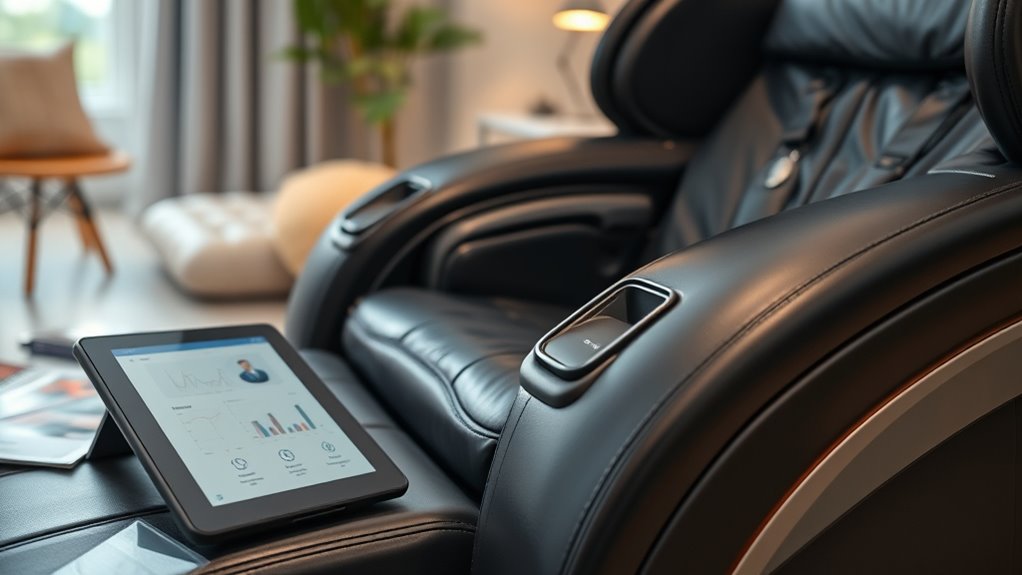
If you have certain medical conditions or injuries, it’s crucial to be cautious before using a massage chair. Always seek medical consultations to ensure safe use, especially if you’re managing injuries or chronic illnesses. Massage chairs can sometimes worsen conditions if misused. To help you assess, consider this:
| Condition | Risks | Recommendations |
|---|---|---|
| Heart disease | Increased strain on heart | Consult your doctor first |
| Osteoporosis | Fragile bones, risk fractures | Avoid deep pressure |
| Recent surgery | Interferes with healing | Wait until fully healed |
Proper injury management and expert advice prevent complications. Don’t skip medical consultations—your safety comes first. Additionally, understanding personal health factors can help determine if massage chairs are suitable for you.
Late at Night or Before Bedtime
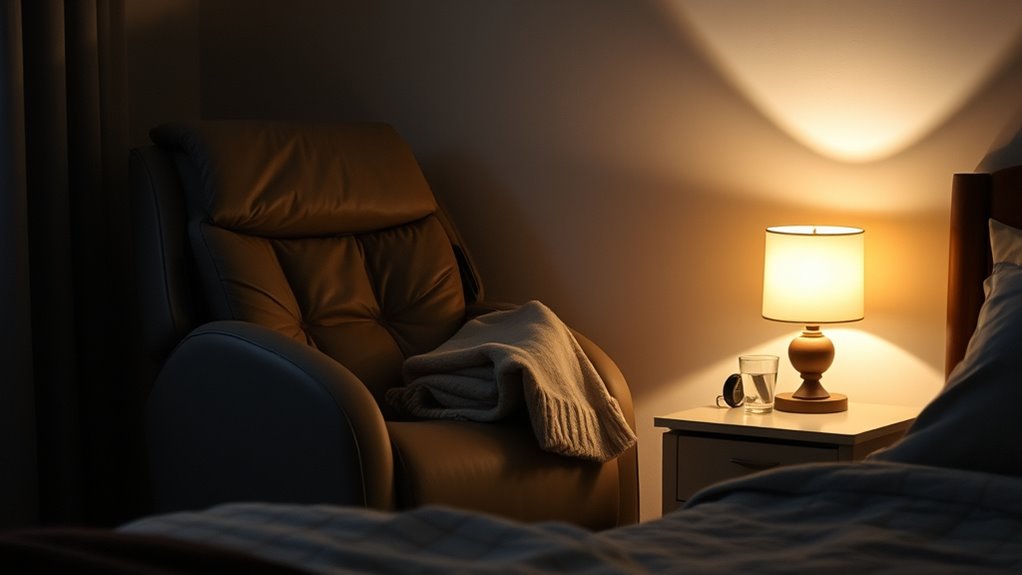
Using a massage chair late at night or before bed can interfere with your sleep schedule. The stimulation might keep you awake longer or make it harder to fall asleep. It’s important to contemplate how timing impacts your rest before you decide to use one. Additionally, understanding energy conservation practices can help you optimize your overall health and well-being.
Timing Matters
Timing plays a crucial role in maximizing the benefits of a massage chair session. Many fall for timing myths, believing late-night massages are always best before bed. However, scheduling misconceptions can lead to poor results or discomfort. To optimize your experience, consider these tips:
- Avoid late-night sessions if you’re sensitive to stimulation or alertness.
- Schedule massages earlier in the evening to help relax without disrupting sleep.
- Don’t assume every time is right—listen to your body’s cues.
- Experiment with different times to find when your muscles respond best.
- Understanding your body’s response to RMDs can help you choose the optimal timing for your massage sessions to enhance relaxation and recovery.
Sleep Disruption Risks
Massaging late at night or just before bed can interfere with your sleep quality, as the stimulation from the massage might make it harder to unwind. This can diminish the relaxation benefits you’re seeking to promote restful sleep. The increased alertness from massage therapy can delay your ability to fall asleep, disrupting your sleep cycle. If you want to enjoy the full relaxation benefits of a massage, it’s best to schedule sessions earlier in the day. Doing so helps your body shift smoothly into sleep, improving overall sleep quality. Avoiding massage chairs right before bedtime ensures you don’t experience unnecessary sleep disruptions, allowing you to wake up feeling more refreshed and rejuvenated. Timing is key to maximizing both relaxation benefits and restful sleep.
During Pregnancy Without Medical Clearance
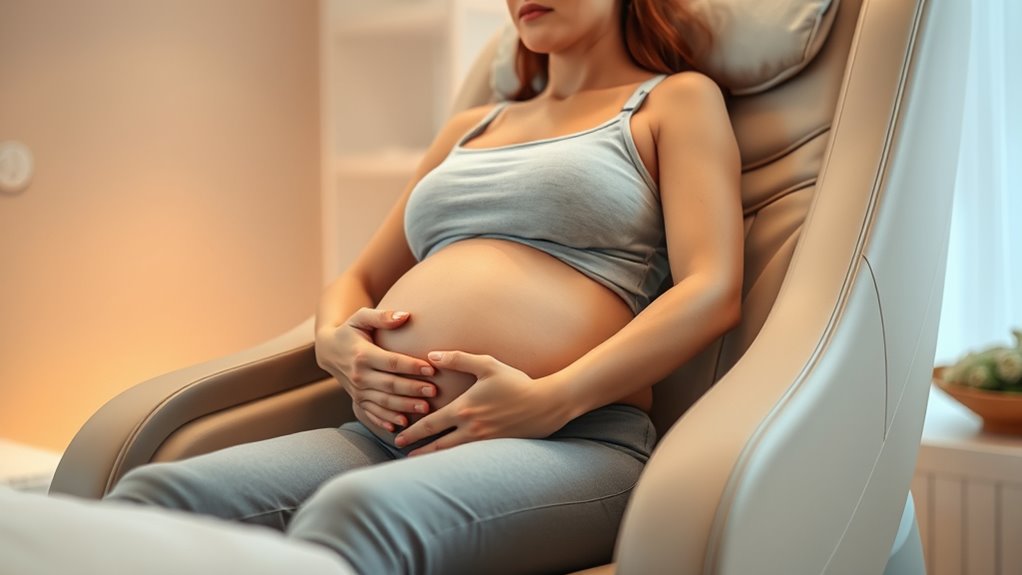
Even if you’re pregnant and considering a massage chair, it’s vital to avoid using it without medical clearance. During pregnancy, safety is essential, and improper use can affect your prenatal safety and the baby’s health. Without proper guidance, you might unintentionally harm yourself or disrupt safe massage timing. Here are key points to keep in mind:
- Avoid using massage chairs in the first trimester without approval.
- Do not rely solely on comfort; some pressure points may trigger contractions.
- Be cautious of massage intensity and duration.
- Always consult your healthcare provider before scheduling sessions.
- Understanding the role of contrast ratio in image quality emphasizes the importance of appropriate timing and settings for safety and comfort.
Skipping medical clearance can lead to risks, so prioritize your health and follow professional advice. Properly timing massages during pregnancy ensures both safety and relaxation.
When Under the Influence of Alcohol or Drugs
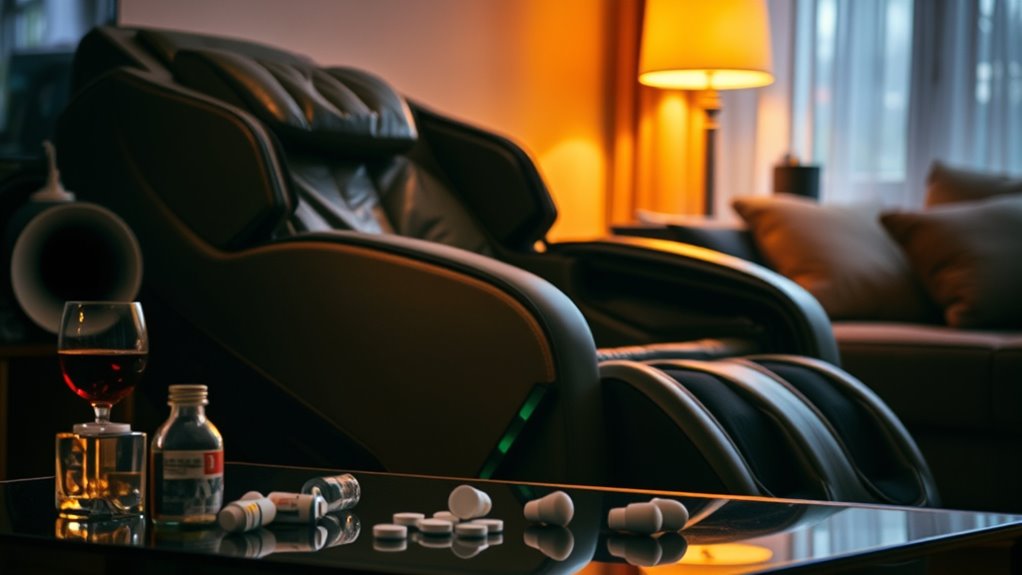
Engaging in a massage chair session while under the influence of alcohol or drugs can be dangerous, as these substances impair your judgment and reduce your ability to recognize discomfort or adverse reactions. Alcohol impairment and drug influence can make it harder to notice if a massage causes pain, dizziness, or other issues. You might push yourself too hard or remain unaware of signs that you should stop. Additionally, relaxation effects from substances can intensify, increasing the risk of feeling overly dizzy or faint. It’s safest to avoid massage chairs until the effects of alcohol or drugs fully wear off. This way, you can enjoy the benefits safely without risking injury or worsening your condition. Always prioritize your safety and well-being during relaxation treatments. Moreover, proper usage and understanding how your body responds are crucial to prevent any potential harm.
Frequently Asked Questions
Can Massage Chairs Help With Chronic Pain Conditions?
Massage chairs can help with chronic pain by promoting relaxation and improving circulation, which may reduce discomfort over time. The massage benefits help ease muscle tension and stiffness, offering some relief for ongoing pain conditions. However, you should consult your healthcare provider before use, especially if you have serious medical issues. When used properly, massage chairs can be a valuable part of your pain management routine.
Are There Age Restrictions for Using Massage Chairs Safely?
You might wonder if there’s an age limit to using massage chairs safely. Rest assured, age restrictions depend on the model and safety guidelines. Typically, children under 12 should avoid them, and seniors should consult a doctor first. As you settle into the chair, be mindful of your comfort and follow recommended safety guidelines. Staying informed guarantees a relaxing experience that’s both enjoyable and safe for everyone.
How Often Should I Use a Massage Chair for Maintenance?
You should use your massage chair about 2-3 times a week for maintenance. Stick to a routine scheduling that fits your comfort and needs. To keep it in top condition, follow maintenance tips like cleaning the upholstery regularly and checking for loose parts. Avoid overusing the chair, which can cause wear and tear. Consistent, moderate use helps prolong your massage chair’s lifespan and guarantees you get the most benefit.
Do Massage Chairs Assist With Mental Health or Relaxation?
Massage chairs definitely support your mental health and relaxation. They promote mindfulness benefits by helping you stay present and calm. When you use them regularly, they assist with stress reduction, easing tension in your muscles and mind. This relaxation can improve your mood and overall mental well-being. So, incorporating massage chairs into your routine can be a helpful tool for managing stress and enhancing your mental health.
Can Massage Chairs Replace Professional Massage Therapy?
Think of a massage chair as a trusty sidekick rather than a knight in shining armor. While it provides great relaxation and can ease muscle tension, it can’t fully replace professional massage therapy. Don’t buy into massage chair myths that claim they’re a complete substitute. A professional therapist offers personalized care and expertise a chair can’t match. So, use massage chairs as a complement, not a replacement, for professional help.
Conclusion
Think of a massage chair as a trusty ship steering your body’s waters. Just like you’d steer clear of storms or rough seas, avoid using your chair during heavy meals, sickness, or after intense activity. Respect its power, especially during pregnancy or under the influence. When you listen to these signals, your journey remains smooth and safe—making sure your wellness voyage stays calm and enjoyable, with no unwanted storms ahead.
